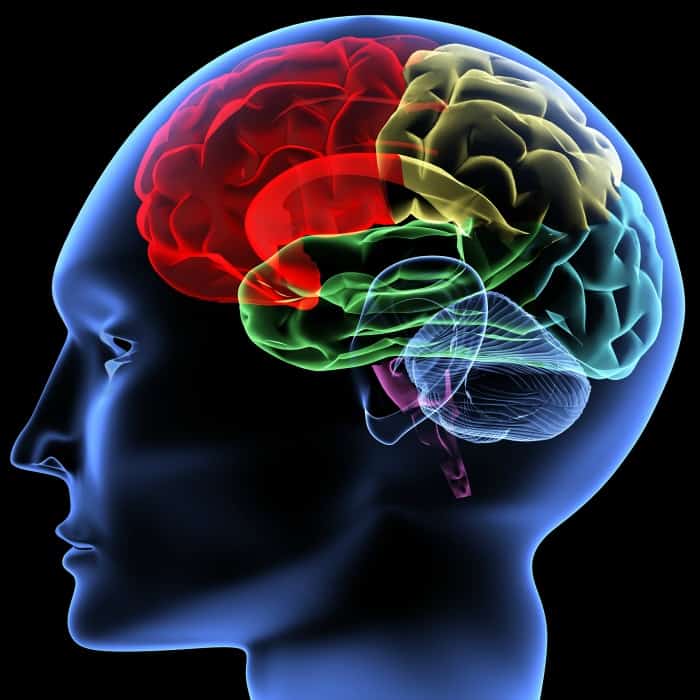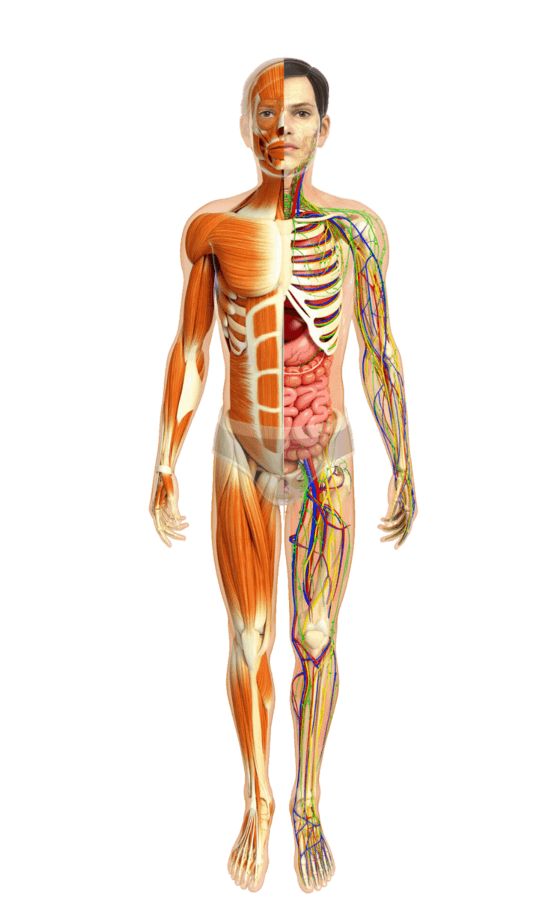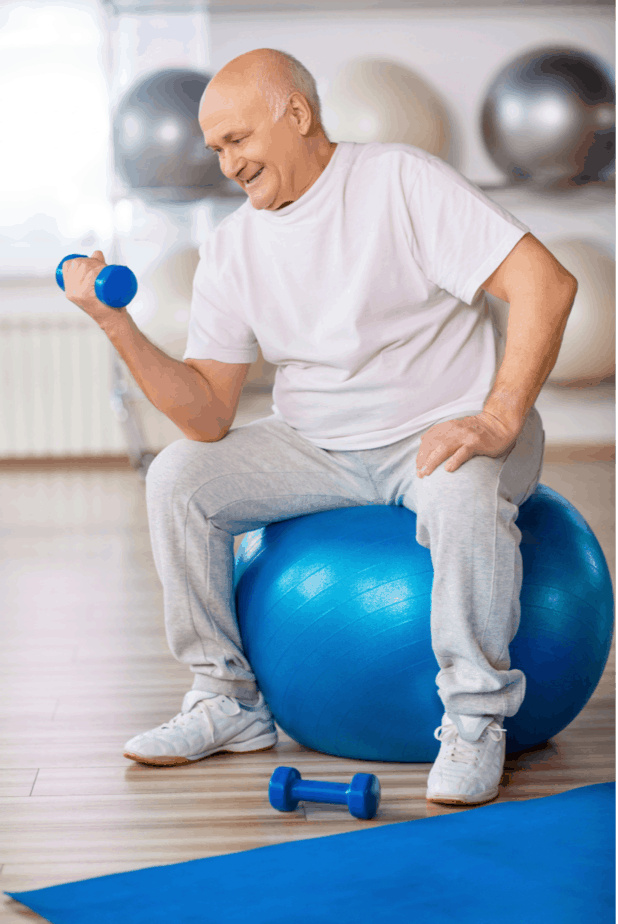Neurological Therapy for Neurodegenerative Conditions and Neurological Trauma
At Buffalo Occupational Therapy, we’re dedicated to providing compassionate and skilled care for individuals with neurological diagnoses. Our practitioners are highly trained and knowledgeable in neurological concepts, rehabilitation approaches, and the application of neurologic-based techniques. We understand that achieving total body results requires the right approach, which is why we’ve redefined occupational therapy through a neuro-centered method.
Whether you’re recovering from surgery, regaining mobility in your upper or lower body, managing chronic pain, or struggling with daily activities, we believe that neurological function is at the core of all ailments. By integrating neuromuscular re-education, neurodevelopmental techniques, proprioceptive neuromuscular facilitation strategies, visual perception, and neurocognitive strategies into your recovery plan, we’re tapping into the innate healing power of your brain.
Our goal is to harness the brain’s natural ability to adapt and change through neural re-patterning and neural plasticity. By doing so, we aim to restore homeostasis to your function and independence, helping you regain control over your life and improve your overall well-being. With our neuro-centered approach, we’re not just treating symptoms – we’re addressing the root cause of your condition to promote lasting recovery and optimal health.
What kinds of treatments and methods does OT use
in Neurological Rehabilitation?
Neuromuscular
Re-education (NMRE)
NMRE is used by neurocentric occupational therapists to improve communication between your muscular system and nervous system. By promoting this stream of communication, you close the circle of recovery. Without NMRE, you can have the biggest muscles in the world and still experience mobility deficits due to poor reaction time, coordination, and mixed signals.
Neurodevelopmental Techniques (NDT)
NDT is a hands-on approach used by occupational therapists to provide deep pressure to key parts of your body during repeated movements. Your movement mixed with repetition and deep pressure creates and stores new motor patterns in your brain in order to re-establish mobility and speed up recovery.
Proprioceptive Neuromuscular Facilitation (PNF)
PNF is an advanced neurological-based approach to increase flexibility and range of motion after a neurological event or soft-tissue injury. Most commonly used after stroke and traumatic brain injury, PNF recruits your nervous system throughout assisted and resisted stretching in order to increase function and independence.
Heavy Work
Heavy work is also known as resistance training and can utilize isometric and isotonic movements with or without external weights while focusing on eccentric and concentric muscle contractions. By partnering heavy work with visual perceptual tasks and neural recruitment visualization, increased carryover and recovery is experienced.
Cross-Crawl Techniques
A cross-crawl technique is used in movement and mobility training of both upper body and lower body. By recruiting both sides of your brain using opposite movement patterns we strengthen the communication across the two sides of your brain known as your corpus collosum.
Visual Perception Strategies
Your vision is crucial in recovery and can affect many areas of healing. We incorporate visual perceptual elements into many treatments to enhance perception, balance, safety, cognition, memory, recall and neural excitation. Some areas of visual perception include form constancy, visual discrimination, figure-ground perception, visual closure, visual memory, and visual sequential memory.
Neurocognitive Strategies
When combining neurcogitive skills and functions with motor elements, true cognitive rehabiliation can take place (memory, recall, sequencing, etc.). We include the domains of neurocognition like language, calculation, executive functioning, complex attention, perceptual-motor, and reasoning while training your body in order to increase neural plasticity and neural re-patterning.
Brain Work
Brain work is essential in ever element of care, especially for individuals experiencing memory impairment. If you are seeing us for cognitive rehabilitation, we incorporate brain work by alternating NMRE, PNF, Heavy working and Brain work to increase intentional recall, selected attention, and focus.
Use of Self
Unlike many clinics and approaches to therapy, Neurocentric occupational therapists strive to use a therapeutic use of self as much as possible. This includes a hands-on approach by the therapist through PNF and NDT, but also as little ‘extra’ tools and equipment as possible. We believe the body desires to heal itself. Neurocentric rehabilitation helps facilitate this healing and restoration through many strategies.
Functional Application
The sole purpose and intention of occupational therapy is to restore function and maximize independence. We beleive there is a specific way to approach rehabilitation in order to not only heal and restore physical function, but also to train the body to be independent again after an injury or ailment. We were made to adapt to physical and environmental changes, the hybrid model of occupational therapy begins by restoring physical function and ends with ensuring that physical function can be applied to your daily life.
Patient Education
Patient education and transparency are of utmost importance to us. True recovery can only take place by equipping someone with the knowledge of what has happened to their body, what can be done to help fix it, and how the therapeutic process works. When you can visualize the process, you can visualize successful outcomes. Healing begins in your mind.
Neuromuscular Massage (NMM) and Kinesiology Tape (KT Tape)
Neuromuscular massage helps many diagnoses. Most specifically used for chronic pain and the release of trigger points (knots), NMM can help resolve debilitating pain resulting from soft tissue implications. Another way we use NMM is to enhance reaction time in individuals after a traumatic neurological event. Studies suggest that NMM can break up adhesions allowing for stronger and faster communication between nerves.
Who can benefit neurological therapy?
Physical, Social, Cognitive, and Mobility Symptoms
Neurological disorders and diagnoses can greatly benefit from a neurocentric therapist. When your therapist works from a neurological perspective, it’s like looking at many pieces of a puzzle and seeing the end result before the pieces are even placed. Neurocentric rehabilitation gives hope to those with a variety of progressive neurological diagnoses.

Specific Diagnoses that benefit from a Neurologic Approach in Occupational Therapy
What should you expect as a
patient or client?
- One-on-one attention from the first evaluation throughout the term of your maintenance program.
- Open lines of communication between you and your therapist. If something is not working or you are frustrated with your progress, we re-evaluate your plan or care or alter our approach so you feel you are maximizing your time spent in therapy
- Hope. Our therapists see hope and therapeutic potential when most give up on functional return. By studying, researching, and thinking outside of the box – our therapists are set apart from all other clinics.
- Be ready to always maximize your potential. By identifying your strengths and implementing those into every treatment session, outcomes are easier to see.
- A whole-body approach. Occupational therapists address biophysical symptoms, psychological-social symptoms, neurological-communication and cognitive symptoms as well as function-based/environment implications. Because we are trained in the whole body, we are the best solution for recovery.

Commitment to Results
One of the greatest challenges you’ll encounter on your rehabilitation journey is often your own mindset. At our facility, we recognize the pivotal role that commitment plays in achieving successful outcomes. That’s why we emphasize the importance of a formal commitment from both you and your therapist to the prescribed plan of care.
Each patient we see is unique, presenting with their own set of symptoms and challenges. While diagnoses may be similar, individual experiences vary widely. Rest assured, our approach is anything but one-size-fits-all. We provide personalized, one-on-one attention to address your specific needs with precision and care.
Your therapist is committed to your success both in and out of the therapy room. Through ongoing education, research, and a deep understanding of best practices, they tailor your treatment plan to deliver the most effective results. We ask for your commitment in return, trusting in the process and adhering to the prescribed plan of care.
It’s important to understand that rehabilitation is a gradual process that requires patience and dedication. Results may not be immediate, but with perseverance and consistency, progress will come. Just as your injury or ailment didn’t develop overnight, healing and restoration take time. Trust in the process, stay committed, and together, we’ll work towards achieving your rehabilitation goals.

